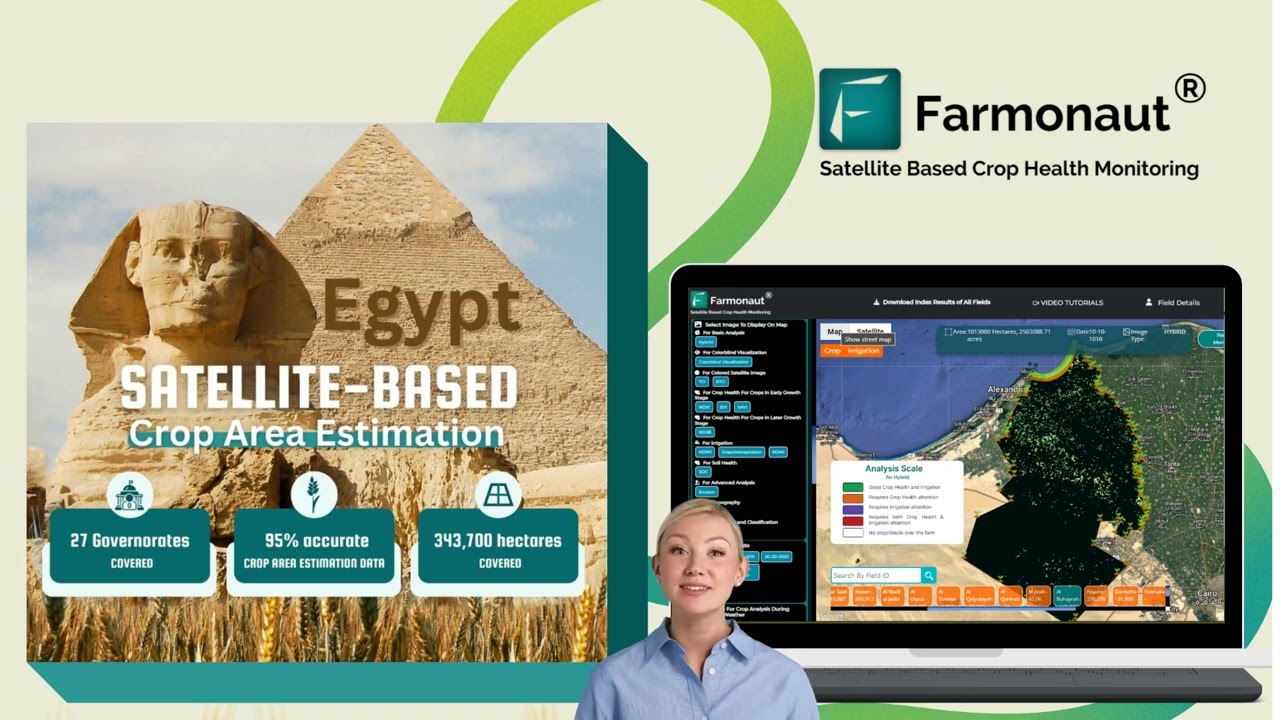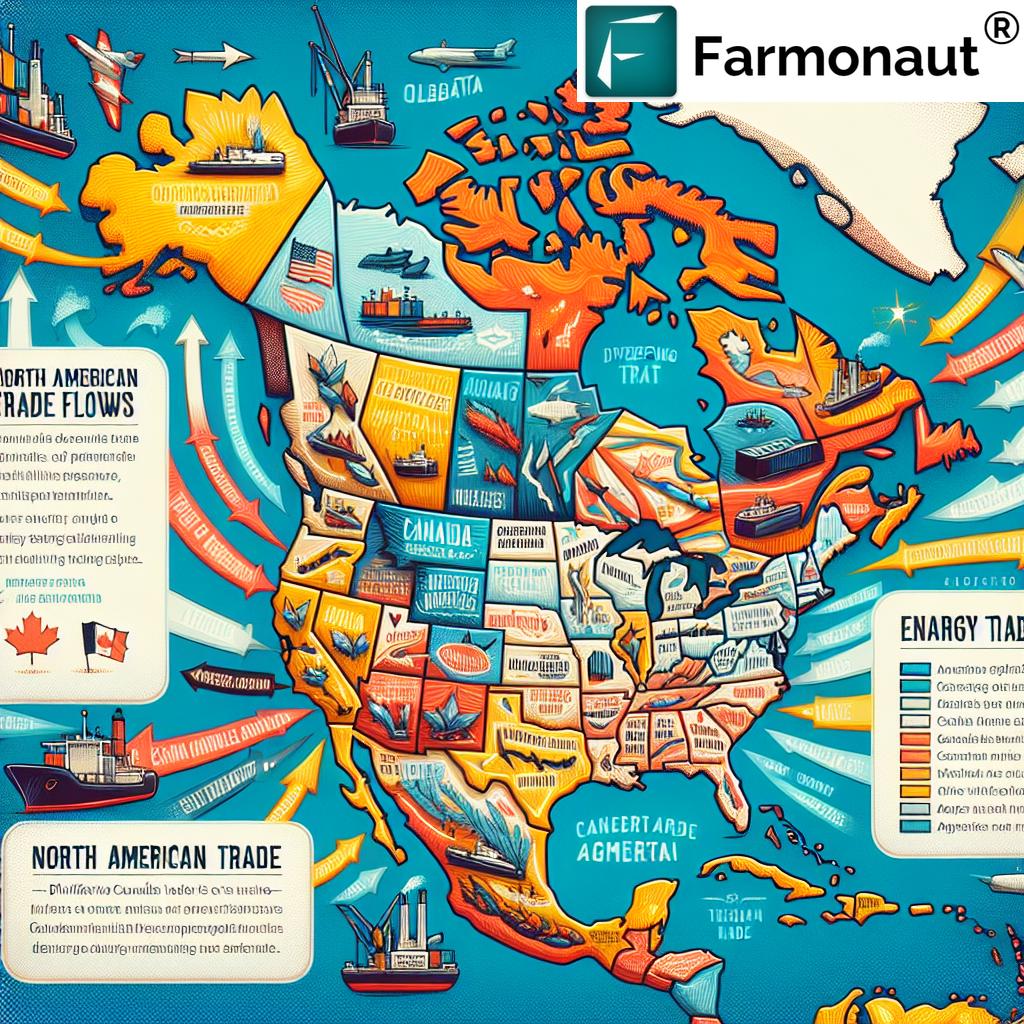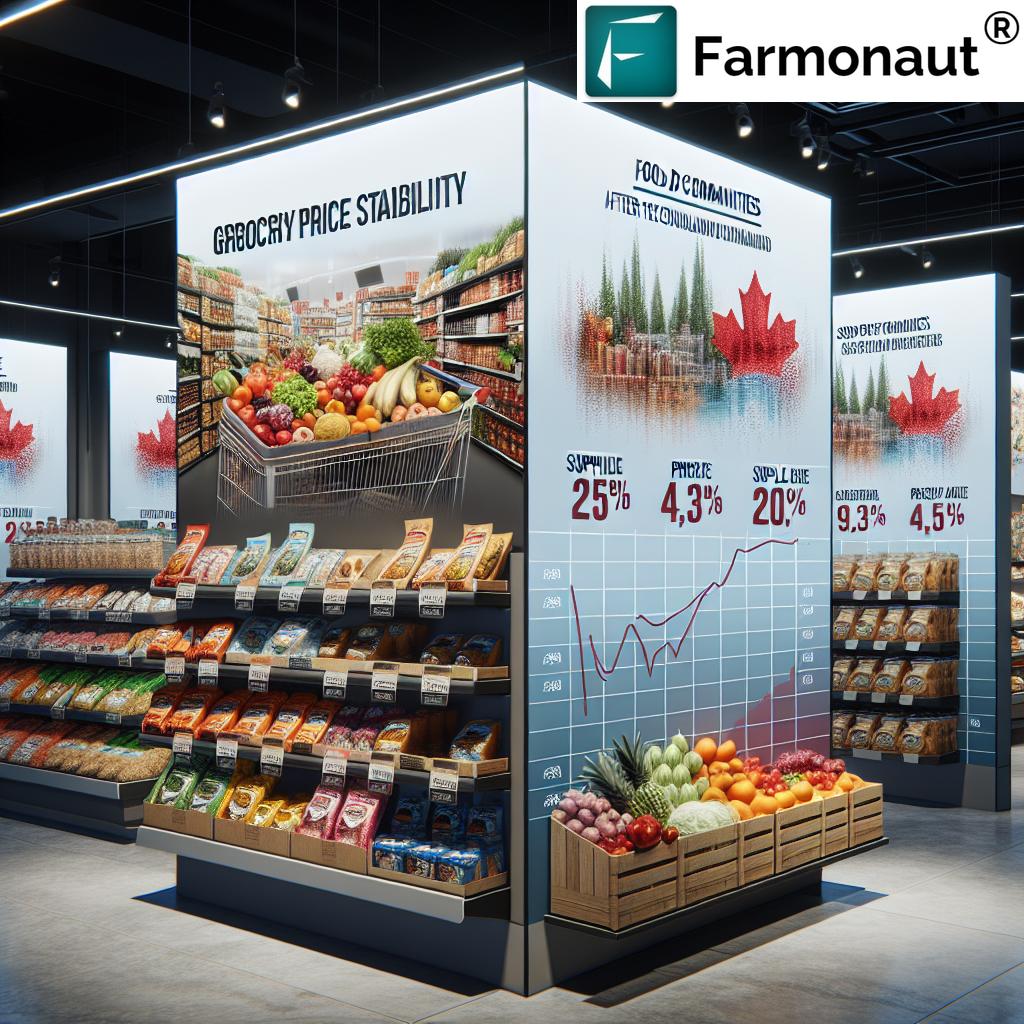Table of Contents
- Introduction: The Significance of Canada US Trade Relations
- Trend 1: Deep Economic Dependence – Unraveling the Canada US Trade Interplay
- Trend 2: Energy Exports & the Canadian Energy Market
- Comparative Analysis Table of Key Canada-US Trade Trends (2019–2024)
- Trend 3: Impact of US Tariffs on the Canadian Economy & Industry Response
- Trend 4: Continental Economic Integration & North American Trade Agreements
- Trend 5: Diversifying Canadian Trade—Challenges & Opportunities
- Farmonaut Insights: Technology & Resource Optimization
- Conclusion: Ottawa’s Economy at a Crossroads
- FAQ – Canada US Trade Relations
Canada US Trade Relations: 5 Powerful Trends Shaping Ottawa’s Economy
As we examine the evolving Canada US trade relations, it becomes evident that Ottawa’s economic path is fundamentally intertwined with that of its southern neighbour. The persistent question of Canadian economic dependence on the United States dominates political debates in Ottawa and signals transformative shifts within our country’s economy.
From the era of Progressive Conservative prime minister Brian Mulroney’s landmark free-trade initiative in the late 1980s, through successive governments and changing tides in global geopolitics, the focus has remained on how our country’s prosperity is woven into the broader Canada, Mexico, United States market.
We are at a critical juncture, where forces such as energy exports, tariff battles, continental integration, and efforts to diversify trade continue to shape the Canadian story.
In this comprehensive analysis, we explore the five most powerful trends currently reshaping economic prospects, political strategies, and industry landscapes in Ottawa and across Canada. We aim to provide factual clarity and actionable insight into the realities of the Canada US trade relationship, the future of Canadian energy exports, the tangible impact of US tariffs on the Canadian economy, the steady march of continental economic integration, and the formidable challenges involved in diversifying Canadian trade.
Trend 1: Deep Economic Dependence – Unraveling the Canada US Trade Interplay
The sheer scale of the Canada US trade relationship underscores its role as a cornerstone of the Canadian economy. For decades, more than three-quarters of our exports have flowed into the United States, reinforcing a web of economic dependency deeply embedded from British Columbia’s forests to the auto plants of Ontario and agriculture in Alberta and St. Catharines, Ont.
This interdependence has led to lively political controversy. Conservative Leader Pierre Poilievre accuses the current Liberal government of failing to protect key sectors, allowing “Canadian energy to head to the United States at a discount,” and of presiding over what he dubs a “lost Liberal decade.”
But, as respected political scientists such as Blayne Haggart (Brock University, St. Catharines, Ont.) and Greg Anderson (University of Alberta) remind us, such reliance is not the work of any one administration—rather, it is a bipartisan project of continental economic integration pursued since the 1980s.
- Ottawa’s trade priorities have historically reflected our proximity and compatibility with the world’s largest consumer market—the United States.
- Canadian commodities and finished products—ranging from lumber and agricultural produce to potash and automobiles—naturally gravitate towards the southern border.
- This gravity creates both opportunities and vulnerabilities, tying the Ottawa and Canadian economy intimately to policy and market shifts in Washington, D.C.
The Political Economy of Dependence
Amidst election campaigns and accusations of government inaction, it is essential for us to recognize that Canadian economic dependence on the United States has been shaped by geography, consumer demand in the U.S., and the evolution of global supply chains over nearly four decades.
- The Canada-US Free Trade Agreement of 1988—soon expanded into NAFTA with Mexico—signaled the beginning of a new era for Canadian exporters and industries.
- Participation in the canada mexico united states market delivered secure access to the U.S. market, but also left us exposed to its fluctuations and political turbulence.
- While recent calls to “build Canadian” and diversify our trading partners have reached new heights, achieving this in practice faces considerable structural headwinds.
Trend 2: Energy Exports & the Canadian Energy Market
The Canadian energy market stands as a giant within the nation’s trade profile, and energy exports to the United States remain among our largest single foreign revenue sources. In 2023, Canadian energy exports to the U.S. exceeded $100 billion, solidifying energy’s pre-eminence in cross-border commerce.
- Alberta is Canada’s engine for oil and gas, delivering billions annually in shipments to U.S. refineries.
- Ontario and Quebec also contribute via electricity exports, especially hydro-generated power exported southward.
- This persistent energy linkage has sparked both celebration—over decades of market access—and concern, with critics arguing that we continue to “export at a discount” and fail to develop diversified, value-added domestic industries within Canada.
Canada Energy Exports: Implications for Policy and Market Stability
Energy comprises a significant proportion of overall trade revenue, and shifts in global energy trends can rapidly alter export dynamics.
Access to U.S. infrastructure and refineries remains crucial, but recent years have seen calls for increased east-west capacity and the development of “national projects” to strengthen internal Canadian market resilience.
- Federal and provincial governments have debated and, at times, clashed over pipelines and liquefied natural gas (LNG) terminals to reach non-U.S. markets.
- Global shifts toward renewable resources and carbon regulation will demand even more agility from the sector, challenging our ability to protect both economic interests and environmental commitments.
For those seeking enhanced sustainability and traceability within the Canadian agricultural and energy sectors, sophisticated solutions such as Farmonaut’s blockchain-based traceability tools can help. These solutions are crucial for industries where supply chain transparency and consumer trust directly impact competitiveness—both within North American trade agreements and abroad.
Resource Optimization and Environmental Tracking
With energy and resource sectors so central to our international trade, measuring and managing environmental impact has never been more crucial. Platforms like Farmonaut’s carbon-footprinting solution empower agribusinesses and energy producers to track, report, and reduce emissions, ensuring compliance and enhancing global market appeal.
Comparative Analysis Table of Key Canada-US Trade Trends (2019–2024)
| Trade Trend | 2019 | 2020 | 2021 | 2022 | 2023 | 2024* |
|---|---|---|---|---|---|---|
| Total Bilateral Trade Volume (USD bn) | 717 | 630 | 705 | 792 | 832 | 845 |
| Top Export Product (Category & Value) | Energy $91bn |
Energy $85bn |
Energy $97bn |
Energy $108bn |
Energy $102bn |
Energy $105bn |
| Top Import Product (Category & Value) | Vehicles $58bn |
Vehicles $49bn |
Vehicles $54bn |
Vehicles $61bn |
Vehicles $65bn |
Vehicles $66bn |
| Impact of US Tariffs (% Change) | -1.0% | -4.5% | -2.3% | +1.2% | +0.9% | +0.3% |
| Share of Energy Exports (% of Exports) | 24.5% | 23.7% | 26.2% | 28.6% | 26.3% | 26.7% |
| *2024 values are preliminary estimates. | ||||||
Trend 3: Impact of US Tariffs on the Canadian Economy & Industry Response
Trade policy in North America is vividly illustrated by fluctuating tariffs and their consequences for industry.
U.S. President Donald Trump’s 2018–19 tariff barrage—targeting Canadian steel, aluminum, and other products—rekindled concerns over the security of our market access and the fragility of cross-border supply chains.
- Tariffs contributed to measurable declines in trade flow, notably a 4.5% drop in 2020 as major global industries encountered price uncertainties and retaliatory measures.
- Affected sectors, from construction to advanced manufacturing and agriculture, felt both direct cost pressures and indirect effects through supply chain slowdowns.
How Ottawa and Industries Responded
Policies in Ottawa have included both retaliatory tariffs and a push for domestic capacity. Governments and opposition parties alike have promoted investment in trade-enabling infrastructure, including rail, port, and pipeline expansion to facilitate both north-south and east-west flow of resources.
Efficient trade is not only about physical infrastructure but also about leveraging technology for market intelligence and risk management.
Farm operators and processors can tap into large-scale farm management tools from Farmonaut to optimize logistics and minimize input costs in a tariff-sensitive landscape.
Tariffs, Market Security & Policy “Homecoming”
The threat of ongoing or new U.S. tariffs has produced a notable “homecoming” effect for some investors: renewed interest in building Canadian solutions for energy processing, manufacturing, and supply chain resilience.
Yet, experts like Greg Anderson (University of Alberta) note this sentiment is often cyclical—public enthusiasm for expensive national projects ebbs and flows depending on the latest crisis or election cycle.
Trend 4: Continental Economic Integration & North American Trade Agreements
The move toward continental economic integration began decades ago but continues to shape Canada’s options and constraints.
The original bilateral Canada-U.S. Free Trade Agreement, followed by NAFTA and its modern successor, the United States-Mexico-Canada Agreement (USMCA), have democratized market access, established investor protections, and fostered industry clusters across the continent.
- Modern supply chains are now highly regionalized, with content, parts, and expertise flowing freely across Canada, the United States, and Mexico.
- Investment, research, and regulatory standards are increasingly harmonized, producing benefits for export-oriented Canadian firms.
- However, these very interconnections pose challenges when trade rules or political priorities shift unexpectedly, as seen in the Trump era.
Adapting to Regional Market Realities
Canadian businesses must master the rules of origin, content requirements, and regulatory compliance across all three member states.
Advanced data and agricultural technology—including Farmonaut’s satellite-enabled resource management tools—help exporters optimize compliance and know their supply chains’ carbon, water, and productivity footprints in real time.
Read more:
Farmonaut’s Fleet Management Solutions empower agricultural and agri-food exporters to manage logistics efficiently even amid shifting U.S.–Mexico–Canada regulations.
Trend 5: Diversifying Canadian Trade—Challenges & Opportunities
Perhaps no challenge looms larger than diversifying Canadian trade and reducing our overwhelming reliance on the United States. Experts agree: despite decades of talk, action has proven difficult.
Barriers to Diversification: Market Gravity and Interprovincial Trade Barriers
- The gravity of the massive U.S. consumer market, located directly next door, acts as a near-irresistible pull on Canadian resources and goods. The convenience, size, and established trade infrastructure all encourage exports southward.
- At the same time, persistent trade barriers in Canada—including regulatory differences, complex licensing, and limited interprovincial infrastructure—hinder the development of internal east-west flows and trade with non-U.S. partners.
As Greg Anderson puts it: “They’ve been working on this for decades, and it never happens. These are really hard things to knock down.”
The Cost of Resilience: Making Hard Choices
Blayne Haggart warns that we must be prepared for the high cost and complexity of weaning ourselves off the dominant U.S. market. Building new export terminals, establishing fresh global relationships, and breaking down internal barriers require substantial investment and, critically, political will across Canadian society.
Powerful technologies such as satellite-based verification—like that used by Farmonaut for crop loans and insurance—are valuable. They support risk mitigation and compliance, particularly for agricultural products aimed at diversified, global markets where trust and verification are paramount.
For guidance on advanced farm and forestry best practices, consider exploring Farmonaut’s advisory solutions.
Farmonaut Insights: Technology & Resource Optimization
Navigating the intricacies of the Canada US trade relationship demands not only effective policy but also advanced tools for data-driven decision-making in agriculture, energy, and logistics. Farmonaut stands at the forefront of tech-enabled farm management and environmental stewardship.
- Farmonaut’s large-scale farm management platform allows agribusinesses to track thousands of hectares, receive real-time crop health updates, and optimize irrigation, nutrient, and pest management—reducing both costs and risks.
- For supply chain managers and exporters, Farmonaut’s blockchain-enabled traceability builds trust and market access, particularly as consumer expectations and international regulations demand ever-increasing transparency.
- Sustainability is also delivered as a bottom-line benefit: carbon-footprinting features supply the data necessary for emissions monitoring and reduction—opening the doors to more demanding European and Asian markets.
- Optimized fleet and resource management minimize logistics expenses and greenhouse gas emissions, enhancing competitiveness as international fuel, tax, and environmental regulations continually evolve.
- Data-driven satellite verification, weather intelligence, and customized AI advisory further support not just crop health but also regulatory compliance and access to innovative financing via validated crop loans and insurance.
For developers and businesses seeking to integrate advanced satellite and weather data, Farmonaut provides robust API access and detailed API developer documentation. This enables seamless integration with business intelligence, compliance, and monitoring systems across diverse sectors.
Conclusion: Ottawa’s Economy at a Crossroads
The trajectory of Canada US trade relations remains vital for our prosperity, yet the path forward is more complex than ever. Our heavy reliance on the United States market has brought remarkable benefits but also exposed vulnerabilities—especially in energy, manufacturing, and agriculture.
Tariffs, shifting continental integration, and external shocks underscore the importance of building a resilient, diversified economic base. The question for Ottawa and all of Canada is whether we have the resolve—and necessary tools—to make the difficult investments that “big thinking” demands.
Empowering industries through advanced technologies such as Farmonaut’s precision agriculture and supply chain solutions is part of the answer. By harnessing satellite data, AI, blockchain, and carbon tracking, we can navigate changing market conditions and regulatory expectations with agility—maximizing productivity and sustainability.
Ultimately, our ability to adapt and innovate will define Ottawa’s and Canada’s position within the evolving Canada-Mexico-United States market and the global economy at large.
FAQ – Canada US Trade Relations
What is the current state of Canada US trade relations?
The Canada US trade relationship remains strong, with over 75% of Canadian exports destined for the US market. Despite occasional political disagreements and the imposition of tariffs, the foundation of the two nations’ trade partnership is solid, built on longstanding agreements and highly integrated supply chains.
How dependent is the Canadian economy on the United States?
The Canadian economy is highly dependent on the US, particularly for energy, agriculture, automotive, and manufactured goods. This interdependence provides stability but also exposes Canada to risk when US policy shifts or protectionist measures are introduced.
How do US tariffs affect the Canadian economy?
Tariffs imposed by the US have historically led to reduced exports, price fluctuations, and supply chain challenges for Canadian industries. Sectors like steel, aluminum, and agriculture have faced direct and indirect impacts, prompting calls in Ottawa for greater self-sufficiency and diversification.
What steps can Canada take to diversify its trade?
Diversifying Canadian trade requires overcoming both internal barriers and market gravity. This may include investing in new export infrastructure, standardizing regulations between provinces, and leveraging advanced technology for market intelligence, crop traceability, and environmental compliance.
How does energy influence Canada US trade?
Energy is consistently the top export from Canada to the US, making up over a quarter of total export value. This includes oil, gas, and electricity, especially from Alberta, Ontario, and Quebec. Energy exports generate vast revenue but also raise questions about market concentration and export pricing strategies.






















